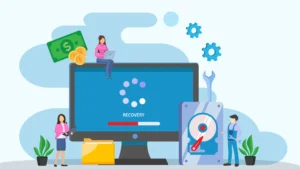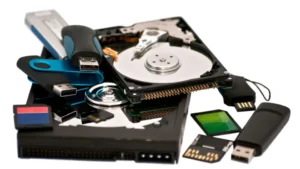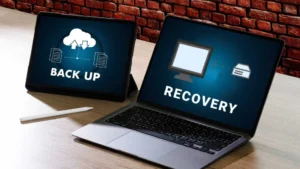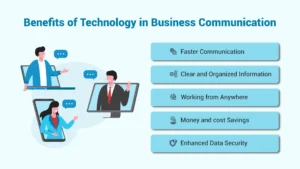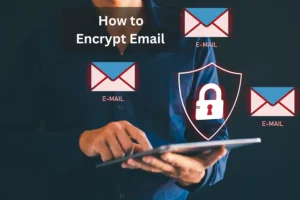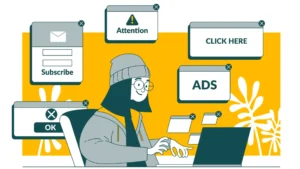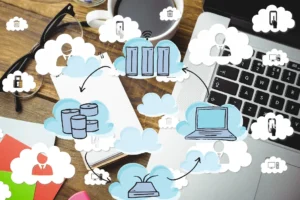Simple Data Loss Prevention for Small Businesses, it’s a bit of a mouthful, sure. But bear with me: this isn’t just another tech term. We’re talking about real people, real businesses, and real consequences. Small businesses, maybe yours, or one you care about, often think, “We’re tiny. Breach? Unlikely.” But guess what? A surprising 43% of cyberattacks target small firms. That number sticks, right? Here’s why simple data loss prevention for small businesses matters: it protects not just files, but customer trust, employee records, and sometimes, legal compliance.
Stick around, the goal here isn’t overwhelm, though it might feel like that. It’s clarity. And maybe a bit of confidence that it’s doable, step by step.
What is Data Loss Prevention (DLP)?
So, what is data loss prevention—DLP explained in plain language?
At its core, data loss prevention is a combination of policies, tools, and habits designed to ensure sensitive info stays secure. Think of it as a security checkpoint for your data. Whether it’s resting silently on your server, cruising across the network, or being used in an email—DLP systems peek, sniff, block, and alert.
It’s like this: you wouldn’t let your customer lists walk out the door on a USB key or accidentally get emailed to a prankster. DLP stops that. It detects unusual behavior, such as a file classified as “confidential” being zipped and sent outside company email, and gives you the power to intervene.
If you’d like a deeper technical take, check out Techno Advantage’s “What is Data Loss Prevention (DLP)?”. It breaks down how DLP tools classify content, monitor channels, and enforce rules based on policies.
Why Data Loss Prevention is Important for Small Businesses
When people hear the term “data protection,” they usually picture large corporations or federal agencies, with towering servers and cybersecurity teams on speed dial. But here’s the truth—small businesses are sitting on goldmines of data too. Maybe not in volume, but definitely in value. And unfortunately, that makes them appealing targets.

Let’s break it down. Most small businesses handle at least one—usually several—of the following:
- Customer data – Names, emails, phone numbers, sometimes even billing addresses or credit card details.
- Employee information – Social Security numbers, bank details, tax forms. All the stuff that absolutely shouldn’t leak.
- Business records – Think contracts, NDAs, internal pricing models, vendor communications.
- Regulated data – HIPAA if you’re in healthcare, PCI-DSS for credit cards, GDPR for clients in the EU. Yes, even small businesses have compliance obligations.
Now imagine this: a laptop goes missing. Or your cloud storage credentials get compromised. Suddenly, that valuable data is out in the wild—and you’re the one responsible.
That’s why the importance of data loss prevention can’t be overstated. A breach might result in:
- Reputational damage – Clients may not forgive or forget. Even one incident can shake trust.
- Fines or lawsuits – Compliance bodies don’t care about company size when handing out penalties.
- Financial strain – You might be paying for recovery tools, IT consultants, or worse—legal representation.
- Downtime – Lost access to files? Productivity nosedives. Projects stall. Revenue takes a hit.
And here’s the kicker: many of these risks aren’t caused by sophisticated hackers. Often, it’s a simple oversight. An unprotected spreadsheet. An employee using public Wi-Fi.
Data loss prevention (DLP) isn’t about buying expensive software—it’s about awareness, intention, and preparation. It gives you control over what leaves your digital doors and helps you sleep a little easier at night.
Because in a world where even a misclick can mean disaster, a good DLP plan is not a luxury. It’s a necessity.
Key Elements of an Effective Data Loss Prevention Strategy
A robust data loss prevention strategy isn’t a one-off purchase—it’s a blend of thinking, planning, tech, and people. Here’s the breakdown:
- Data discovery & classification
You can’t protect what you don’t know. First, catalog your data: documents, emails, databases, archived files. Then tag them based on sensitivity—public, internal use, confidential, or regulated. This sets the foundation. - Access control & encryption
Follow the principle of least privilege—employees access only what they need. Plus, encryption ensures that even if data walks out, it’s gibberish. - Monitoring & real-time alerts
Watch how data moves across your network, cloud storage, endpoints, and removable media. When a red flag appears—say, a huge password-protected zip file—it alerts you or halts the action. - Policy enforcement
Set and enforce rules. No confidential data in personal email. No exporting customer lists to external services. Rules don’t mean surveillance—they mean safety. - User education & training
Tools don’t work alone. Employees must understand why they matter. Embed security awareness into onboarding, refreshers, and ongoing reminders. - Incident response planning
Have a roadmap: Who’s notified? What gets restored first? Who handles PR? When do backups kick in? The quicker and more confident you act, the less damage. - Continuous improvement
Demo your strategy regularly, test backups, audit permissions—and tweak rules as new apps or channels come online.

It’s not harder than your annual planning cycle—it’s just one more routine, repeated smartly.
Simple Data Loss Prevention for Small Businesses: 7 Best Practical Tips
Alright—time for DLP best practices you can actually do:
1. Back up everything—regularly
Use a 3-2-1 backup principle: three copies, two formats, one off-site. Automate it daily, or better yet, continuous. Restore drills monthly. Look into cloud services or local backup with external storage. If you want help setting this up from scratch, Techno Advantage’s “What is Data Backup and Recovery?” is a handy walkthrough.
2. Encrypt everywhere
Disk encryption on every laptop, full-disk and file-level encryption in cloud services, TLS for data in transit. You want the kind where even if someone grabs the physical device, they’re stuck at the login prompt—still blocked.
3. Enforce least privilege access
Not everyone needs customer records. Set up groups and roles, and place data behind access control. Use Active Directory or cloud IAM settings. Review yearly to revoke outdated accounts.
4. Train and remind your team
Phishing simulations, monthly updates, simple infographics on Slack or internal comms. It doesn’t need to be long—just frequent. Show them what “suspicious email” looks like. Studies show a well-informed team can block more threats than firewalls.
5. Prevent risky data movement
Disable USB ports where possible, block personal cloud uploads, limit downloads of customer data to approved channels. DLP software can intercept suspect moves and alert admins or pause the transfer.
6. Use built-in DLP features if you can
For instance, Microsoft Purview Data Loss Prevention comes free with many Office 365 packages. Set it to flag or block when credit card numbers, SSNs, or bank details appear in docs or email.
7. Test your restart—recover early
You’ll sleep better knowing recovery works. Make each department recover a set of files from backup on a sandboxed machine. DLP isn’t just prevention—it’s reliable restoration.
1, 2, 3—your small business can implement these steps within a couple of weeks.

How to Implement a DLP Strategy in Your Small Business
Think of implementation as these six realistic steps:
Step 1: Audit what you have
List everything: cloud apps, storage, endpoints. Identify where data lives and who uses it. It helps paint a full picture.
Step 2: Classify your data
Use tags or labels: Public, Internal, Confidential, Regulated. Email protocols and cloud apps often let you assign such tags automatically.
Step 3: Define policies
Ask: “Can this data leave the network?” “Under what conditions?” “Can it be emailed or saved locally?” Form simple yes/no rules.
Step 4: Choose your tools
Evaluate options like Microsoft Purview, Digital Guardian, Forcepoint, or even open-source MyDLP. Match features with your use cases—Cloud? On‑prem? Mixed?
Step 5: Pilot with a small group
Pick 5–10 people, equip them with the new setup—backup scheduler, encryption tool, DLP policy. Collect feedback, catch hiccups.
Step 6: Expand and refine
Use what you learn from the pilot to roll out across the team. Keep logs, monitor alerts, update training, plan your response flow.
Treat it as a project, not a panic reaction. This is where “How to prevent data loss” becomes real action—and yes, it has friction. But that’s good. It shows it’s working.
Recommended Tools and Software for Data Loss Prevention
Looking for small business cybersecurity and data loss prevention in cyber security tools? Here are tailored options:
1. Microsoft Purview Data Loss Prevention
- Built into Microsoft 365 plans—no extra cost if you already subscribe.
- Rules templates detect credit cards, SSNs, and set alerts or blocks.
2. Digital Guardian DLP
- Great for endpoint protection across Windows, macOS, Linux.
- Identifies sensitive files and can block USB exfiltration.
3. Forcepoint Data Loss Prevention
- Handles OCR on image files and screenshots.
- Uniform policy application across email, web uploads, cloud apps.
4. MyDLP (Open-source)
- Web/email/USB monitoring without license fees.
- A bit dated on UI, but functional for small shops saving on cost.
Plus there are complementary tools for backups and disaster recovery—they’re part of the bigger business continuity picture. Want to dive into that mix? The article The Importance of Data Center Disaster Recovery Plan explains how recovery planning fits into both local server setups and hybrid/cloud models.
Common Data Security Mistakes Small Businesses Should Avoid

Even the most well-meaning small businesses fall into a few familiar traps when it comes to data security. These aren’t always glaring errors—they’re more like overlooked habits that quietly build risk over time.
One big one? Backup complacency. Just because data is being backed up doesn’t mean it’s recoverable. If you’re not testing your backups regularly, you might as well not have them at all.
Then there’s the over-reliance on tools. Having antivirus software or DLP installed isn’t enough. Without clear policies and basic training, those tools can’t do much.
Physical security also gets overlooked. A misplaced laptop or an unlocked office after hours can be just as dangerous as a cyberattack.
Another sneaky issue is permissions drift—when former employees, freelancers, or even interns still have access to internal systems. It’s easy to forget, but it’s a serious vulnerability.
And finally, the lack of documentation. When key processes, tools, or passwords live only in someone’s head, turnover becomes a risk.
These aren’t tech failures—they’re human oversights. The fix? Make security a routine. Quick audits. Permission reviews. And always—test your recovery plan. Prevention doesn’t need to be perfect—it just needs to be consistent.
When to Seek Professional Help with Data Security
Okay—you’ve done your homework, you read the steps, and you feel a bit overwhelmed. Here’s where Techno Advantage steps in:
- Managed Data Backup & Recovery – Off-site storage, encryption, daily backups, and tested restores tailored for your setup.
- Disaster Recovery Planning – A strategic plan including RTOs (Recovery Time Objectives), prioritized systems restoration, and communication workflows.
- DLP Strategy Implementation – From policy drafting to tool setup, enforcement, alert tuning, and ongoing maintenance.
- Cybersecurity Monitoring & Support – Endpoint protection, threat monitoring, incident response—without adding headcount.
It’s not a sale—it’s synergy. If that “DIY overwhelm” is real, consider booking a service through Techno Advantage’s booking page. They’ll assess your priorities, build, and manage the setup—so you stay focused on running, not patching.
Conclusion
We’ve taken a long walk through practical, human-size steps—everything from “what is data loss prevention?” to setting up DLP tools, spotting mistakes, and knowing when to ask for backup (see the pun?)
Here’s the wrap-up:
- Covered what DLP means and why it matters.
- Detailed a seven-point checklist you can do now.
- Walked you through how to implement a strategy cleanly.
- Shared best-in-class tools and linked you to Techno Advantage resources.
- Warned you about everyday missteps.
- Reminded you professional help is available.
If you’ve stuck around—and your cursor is pinging at closing time—well done. Keep simple data loss prevention for small businesses more than a headline. Make it a habit. Protect your files, your reputation, your future. And if you ever feel stuck? You know who to call.
Stay safe, stay prepared—and know your data is secure.
Author
-

Jay S. Allen, MCP, MCSA, MCSE, MCSE+ Security, is an experienced IT professional with more than 20 years in the industry. He specializes in delivering enterprise-level cybersecurity and IT support solutions tailored to small and mid-sized businesses. Through Techno Advantage, Jay is dedicated to helping organizations strengthen their security posture and achieve greater efficiency through smart, scalable technology solutions.


